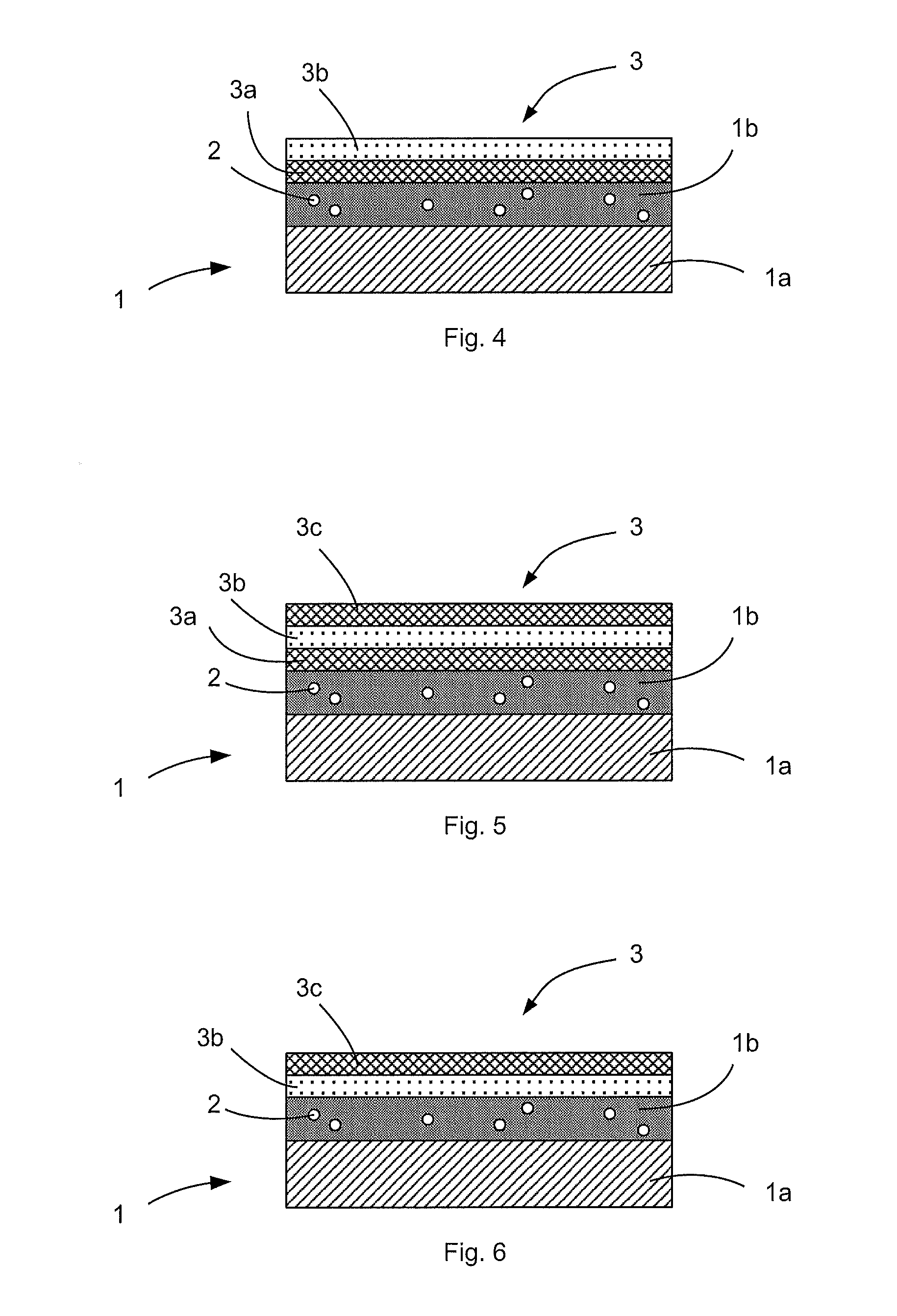Method for performing activation of dopants in a gan-base semiconductor layer
- Summary
- Abstract
- Description
- Claims
- Application Information
AI Technical Summary
Benefits of technology
Problems solved by technology
Method used
Image
Examples
first embodiment
[0054] illustrated in FIG. 4, cap block 3 comprises an AlGaN or AlN layer 3a in contact with semiconductor material layer 1b, and a Mg or MgO layer 3b in contact with layer 3a.
[0055]The Mg or MgO layer acts as a reservoir of Mg atoms which constitute p-type dopant impurities able to diffuse through AlGaN layer 3a to semiconductor material layer 1b. The AlGaN layer also prevents diffusion to semiconductor material layer 1b of species belonging to other layers able to be deposited above layer 3b.
[0056]Deposition of AlGaN layer 3a is advantageously performed by means of a similar method to the one that has just been described in relation with n-type doping. The thickness of AlGaN layer 3a is comprised between 1 and 40 nm, preferentially between 5 and 20 nm and ideally equal to 10 nm. This thickness range enables a sufficiently weak layer 3a to be had to allow diffusion of the Mg atoms in the direction of layer 1b and ensures a sufficient thickness to perform the barrier function for ...
fourth embodiment
[0069]According to cap block 3 used for p-doping of semiconductor material layer 1b, the cap block can contain a single Mg or MgO layer 3b (cf. FIG. 7). In this case, it can be advantageous to deposit a layer 3b having a thickness of more than 10 nm for cap block 3 to be able to play its role of protection barrier correctly when the heat treatment is performed.
[0070]Whether the doping performed is n-type or p-type, a silicon-base covering layer 4 is deposited on top of cap block 3. This step is illustrated in FIG. 8.
[0071]Covering layer 4 can be made from amorphous silicon, silicon oxide, or silicon nitride which may be stoichiometric or not and noted SixNy. Layer 4 can advantageously be made from SiO2, as this material is very resistant when temperature changes take place.
[0072]When the method is used to activate n-type dopants, it is not necessary for cap block 3 to be provided with a Mg or MgO layer. In this case, Si atoms can diffuse through cap block 3 in the direction of semic...
PUM
 Login to View More
Login to View More Abstract
Description
Claims
Application Information
 Login to View More
Login to View More - R&D
- Intellectual Property
- Life Sciences
- Materials
- Tech Scout
- Unparalleled Data Quality
- Higher Quality Content
- 60% Fewer Hallucinations
Browse by: Latest US Patents, China's latest patents, Technical Efficacy Thesaurus, Application Domain, Technology Topic, Popular Technical Reports.
© 2025 PatSnap. All rights reserved.Legal|Privacy policy|Modern Slavery Act Transparency Statement|Sitemap|About US| Contact US: help@patsnap.com



